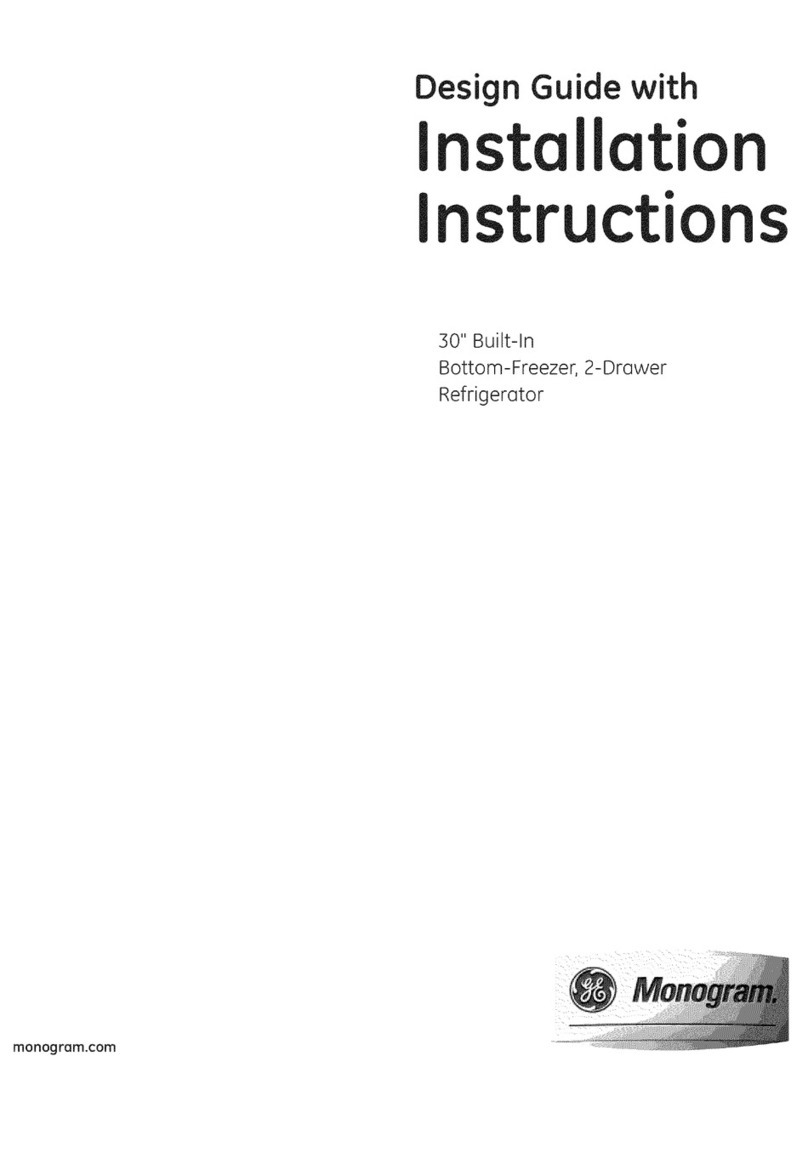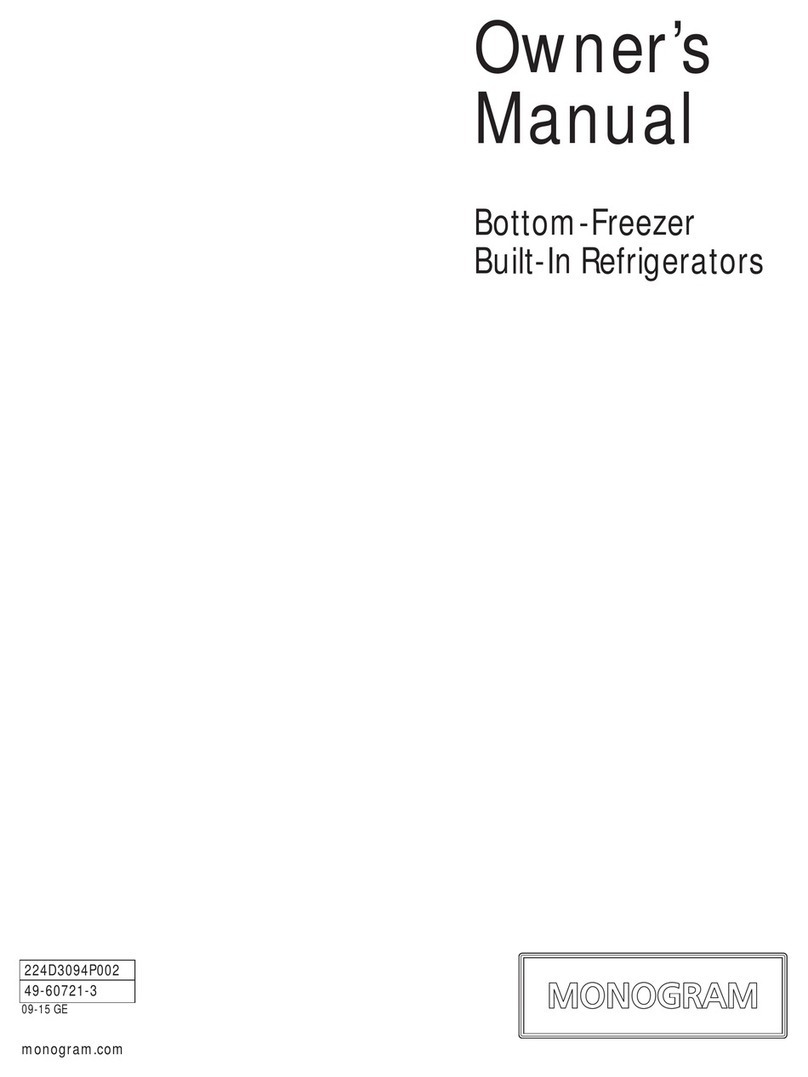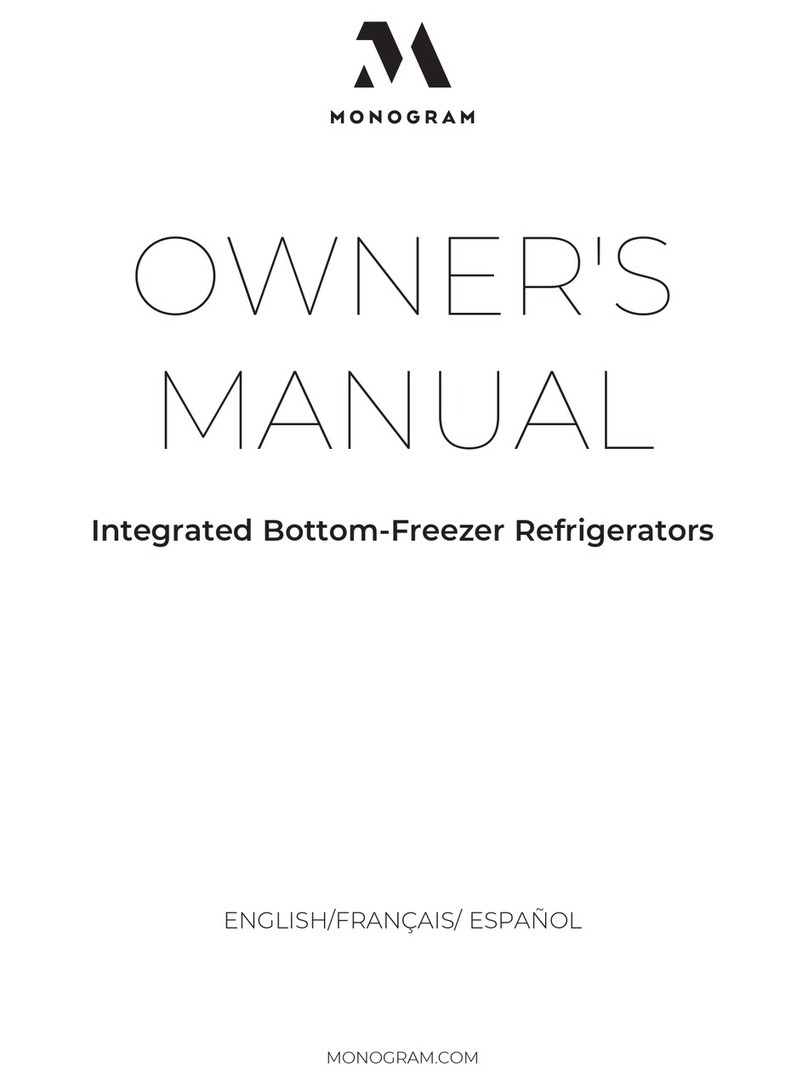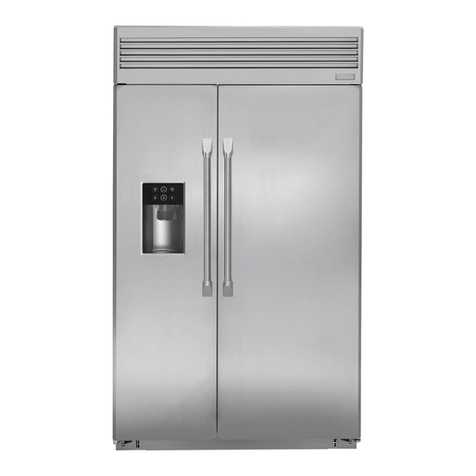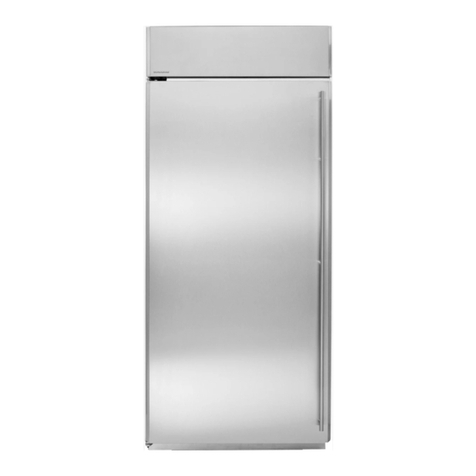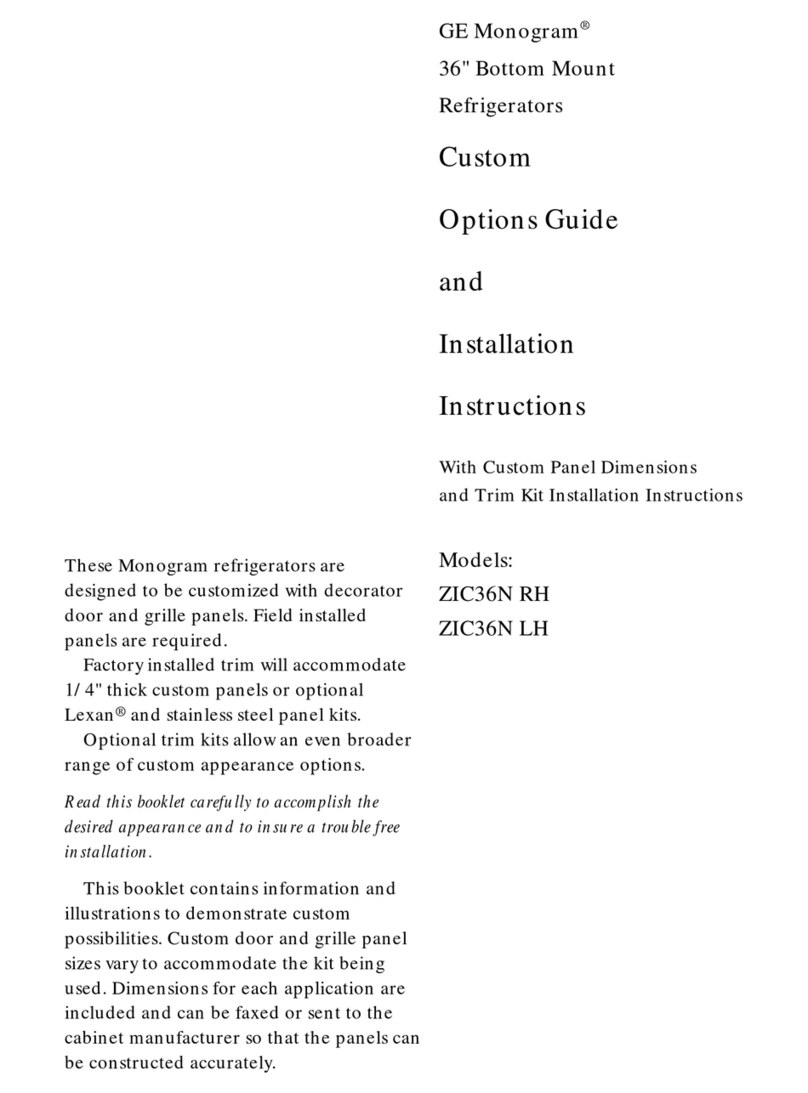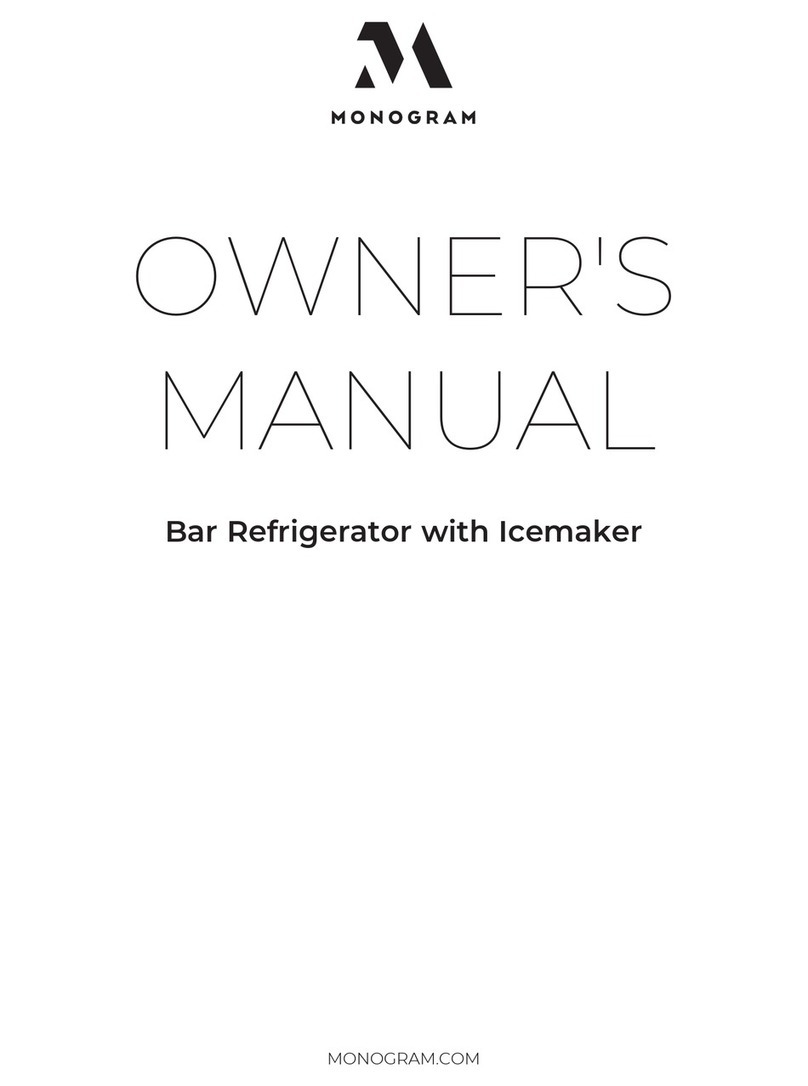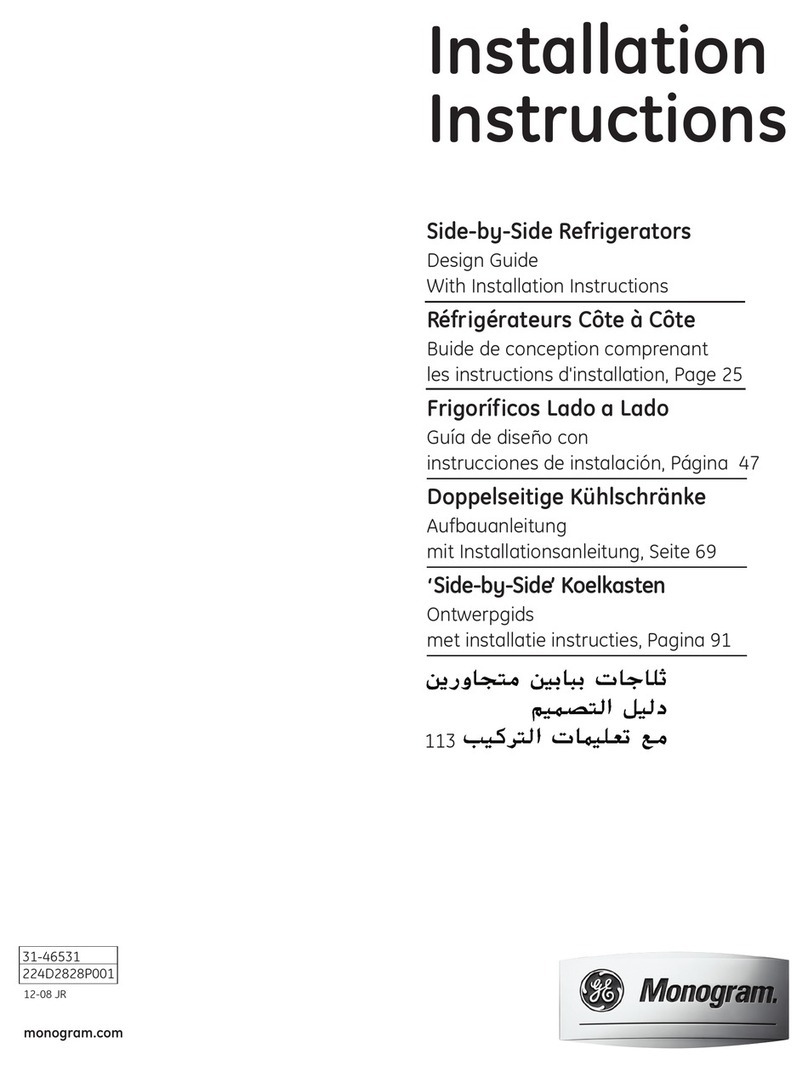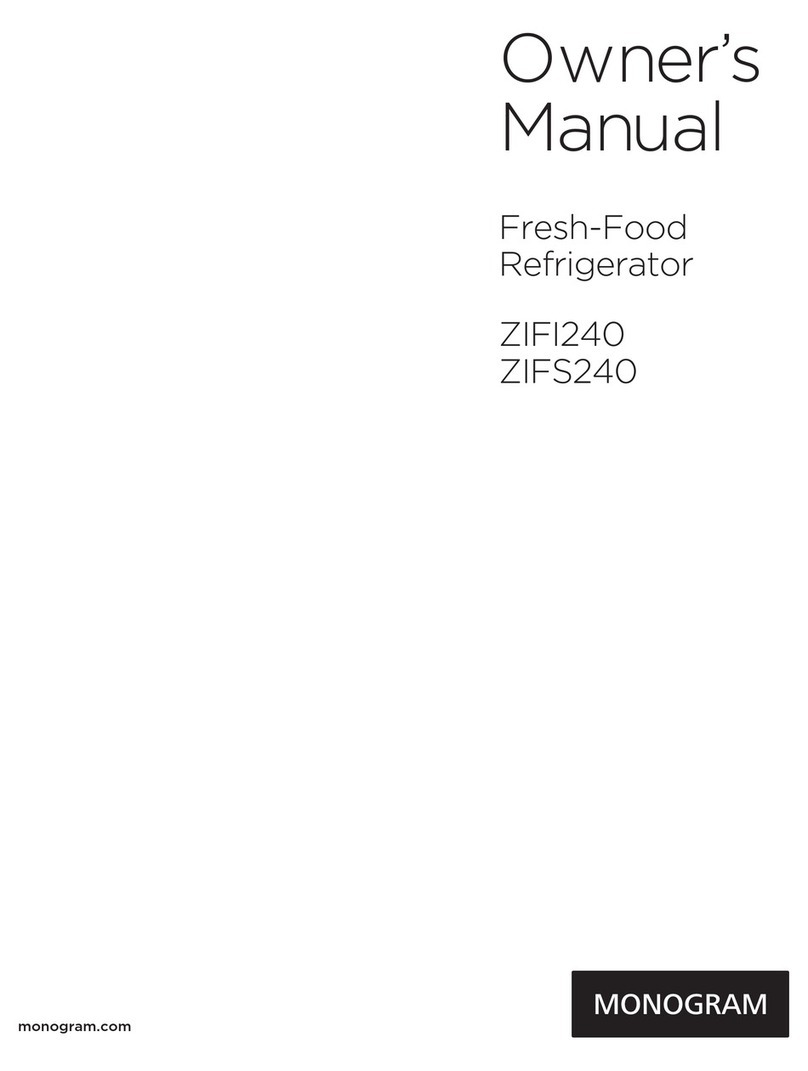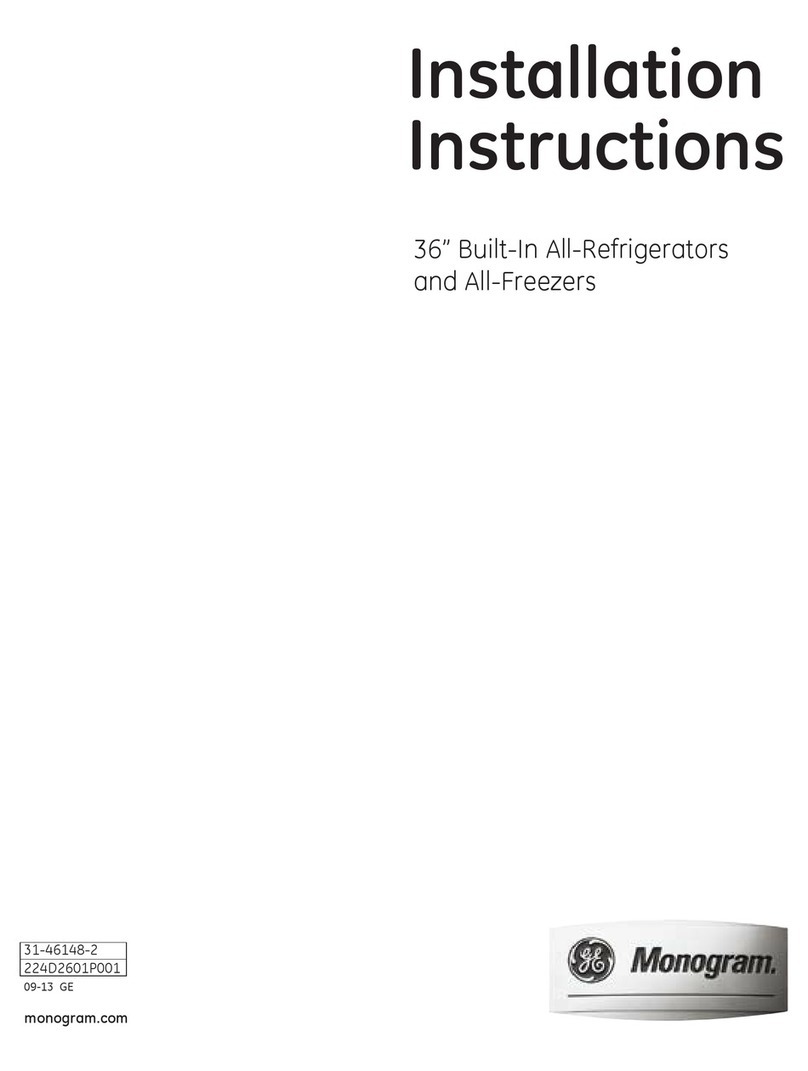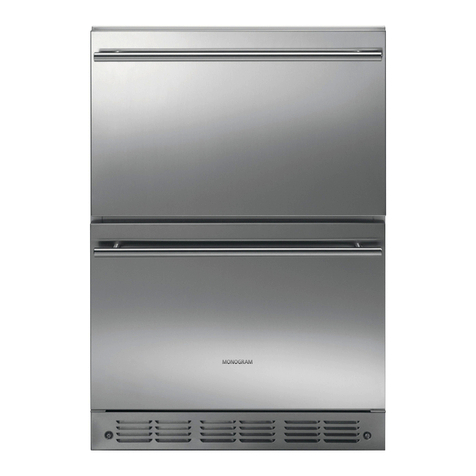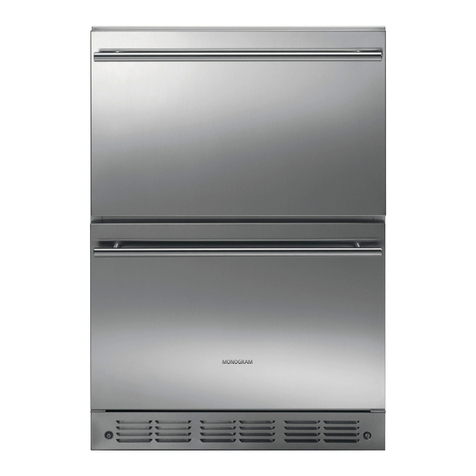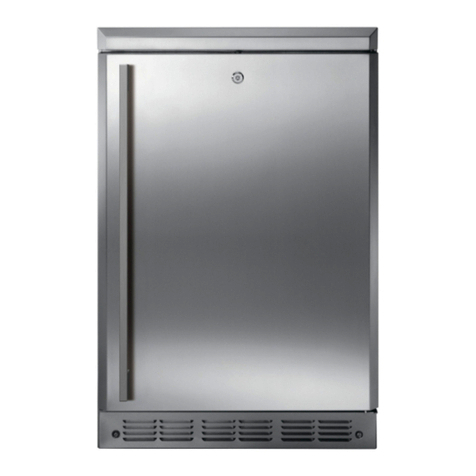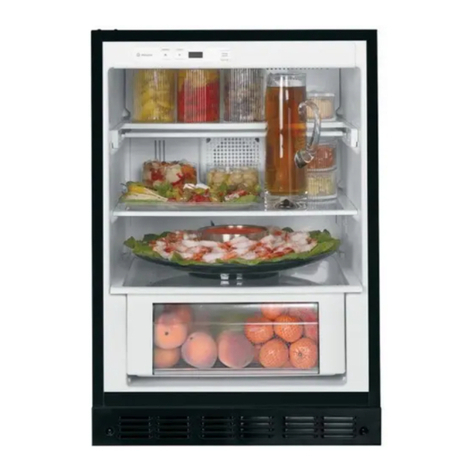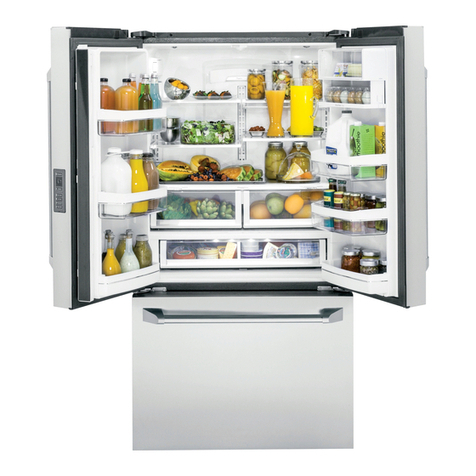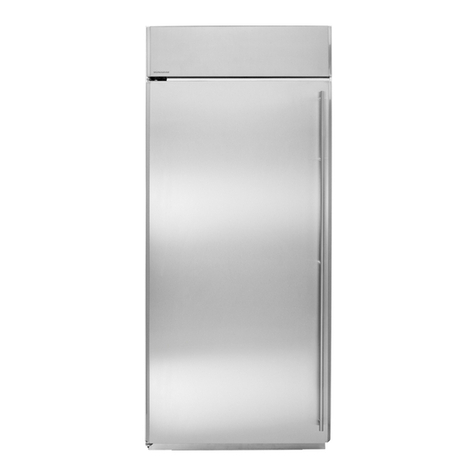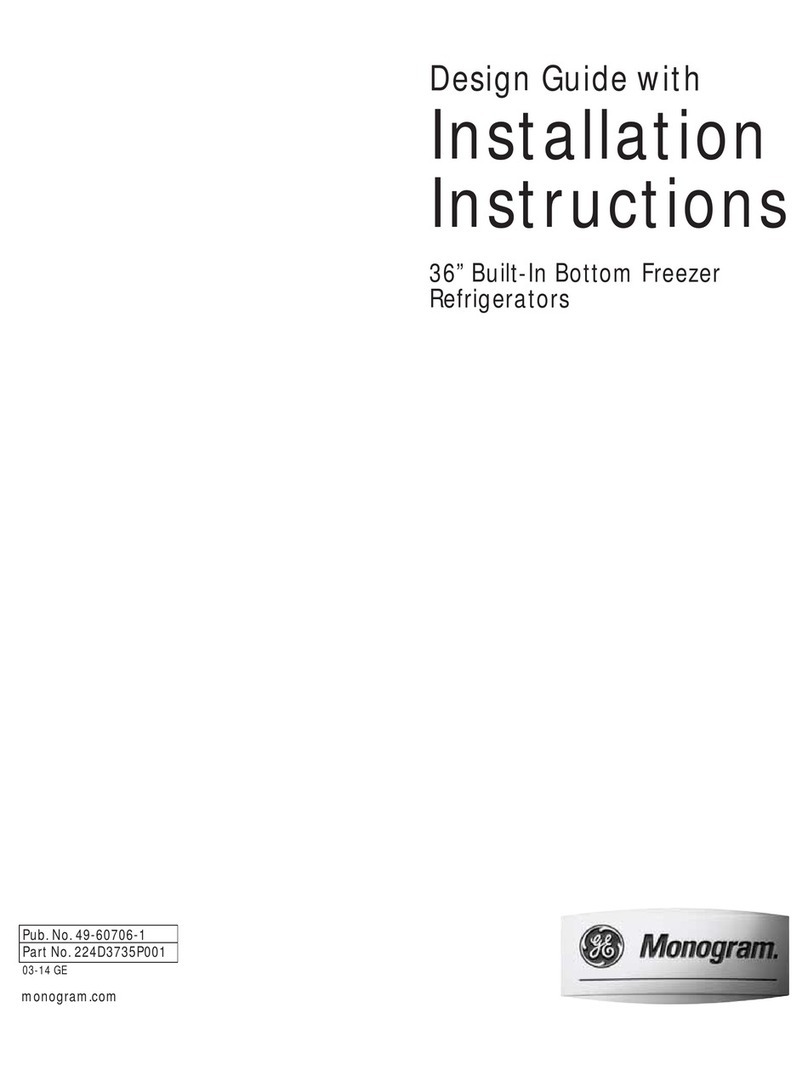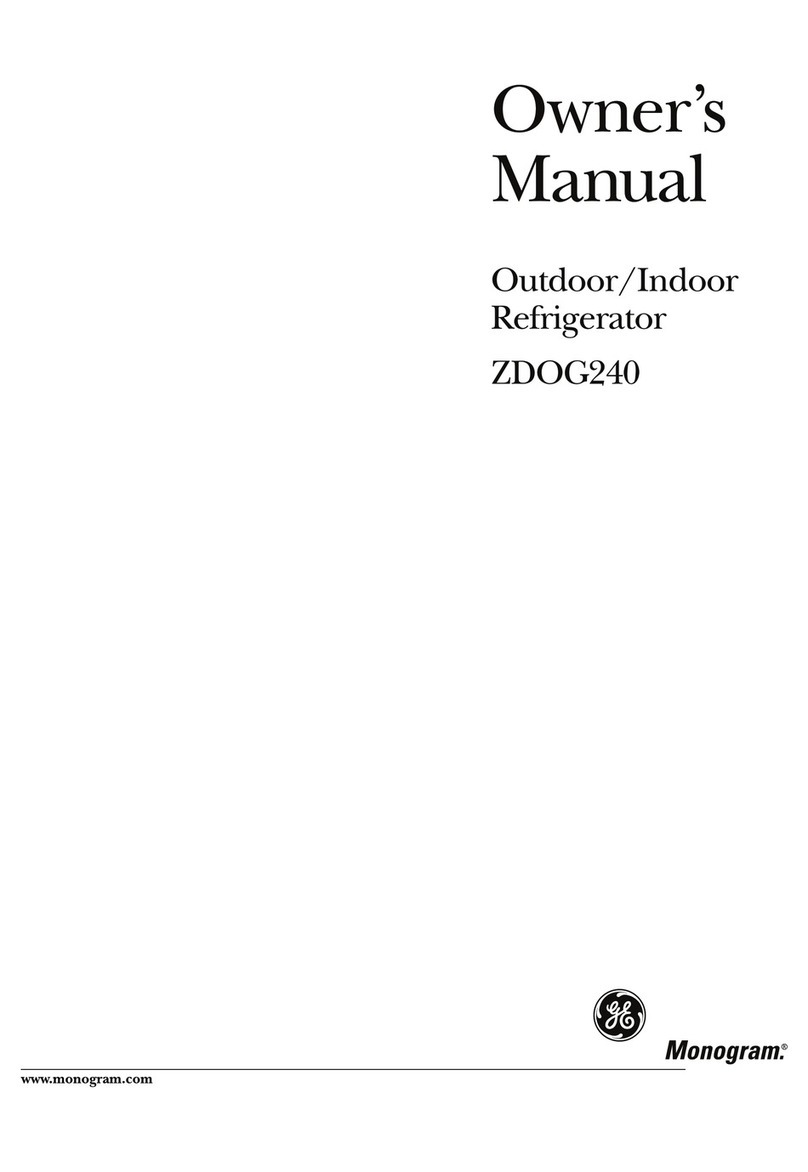
Before you begin - Read these instructions completely and carefully.
IMPORTANT - Save these instructions for local inspector's use.
IMPORTANT - OBSERVE ALL GOVERNING CODES AND ORDINANCES.
Note to Installer - Be sure to leave these instructions with the Consumen
Note to Consumer - Keep these instructions with your Owner's Manual for future reference.
This appliance must be properly grounded. See "Grounding the
Refrigerator," page 12.
Cet appareil dolt _tre correctement mis 6la terre. Consulter <<Mise 6terre du r_frig_rateur >>,page 12.
If you received a damaged product, you should
immediately contact your dealer or builden
Proper installation is the responsibility of the installen
Product failure due to improper installation is not
covered under the GEAppliance Warranty. See the
Owners' Manual for warranty information.
For Monogram local service in your area,
1.800.444.1845.
For Monogram service in Canada,
1.800.561.3344
For Monogram Parts and Accessories,
call 1.800.626.2002.
Due to the weight and size of this refrigerator, and
to reduce the risk of personal injury or damage to
the product - THREE PEOPLE ARE REQUIRED FOR
PROPER INSTALLATION.
Use this appliance only for its intended purpose.
Immediately repair or replace electric service
cords that have become frayed or damaged.
Unplug the refrigerator before cleaning or
making repairs.
Repairs should be made by a qualified service
technician.
• II ne faut utiliser cet appareil que pour rusage
pour lequel il a _t_ construit.
• IIfaut r@arer ou remplacer imm_diatement tout
cordon d'alimentation _lectrique effiloch6 ou
endommag&
• D6brancher le rdrig_rateur avant le nettoyage
ou toute intervention.
• Les r_parations doivent _tre faites par un
technicien qualifi_.
cause du poids et de la taille de ce r6frig_rator
et pour r_duire le risque de blessure et de
dommages, IL FAUT TROIS PERSONNES POUR
FAIRE L'INSTALLATION CORRECTEMENT.
Contents Design Information
Flush or Semi-Flush Enclosure Installations ..................3
Enclosure Cutout and Product Dimensions ....................3
Clearances ......................................................................................4
Side By Side Installation of Freezer
and Refrigerator ..........................................................................4
Installation Examples ............................................................4, 5
Frameless Cabinets ....................................................................5
Accessory Panel Kits ..................................................................5
Advance Planning Appearance Options ..........................5
Models Available ..........................................................................6
Trim Kit Descriptions ..................................................................6
Custom Panel Dimensions
Product and Cutout Information ..........................................7
1/4" Thick Custom Panels on 1/4" backing ....................8
3/4" Thick Panels with Supplied Handle ..........................9
3/4" Thick Panels with Custom Handle ..........................10
Side Panel or Filler Options ..................................................11
Installation Instructions ................................................12-18
Trim Kits
ZGC2 Trim Kit, Grille Panel Frame Adjustment ..........19
ZKHR1 Trim Kit (for 1/4" Panels),
Support for Custom Handles ....................................20-21
ZKTR36LH/ZKTR36RH Trim Kit,
3/4" Custom Panels ......................................................22-25
ZKHTR1 Trim Kit (for 3/4" Panels),
Support for Custom Handles ....................................26-28
ZKHRSS1 Trim Kit (for 1/4" Panels),
Tubular Stainless Steel Handles ..............................29-32
ZKHTRSS1 Trim Kit (for 3/4" Panels),
Tubular Stainless Steel Handles ..............................33-34
ZUG75 Trim Kit, Unified 3/4" Grille Panel Kit ......35-40

